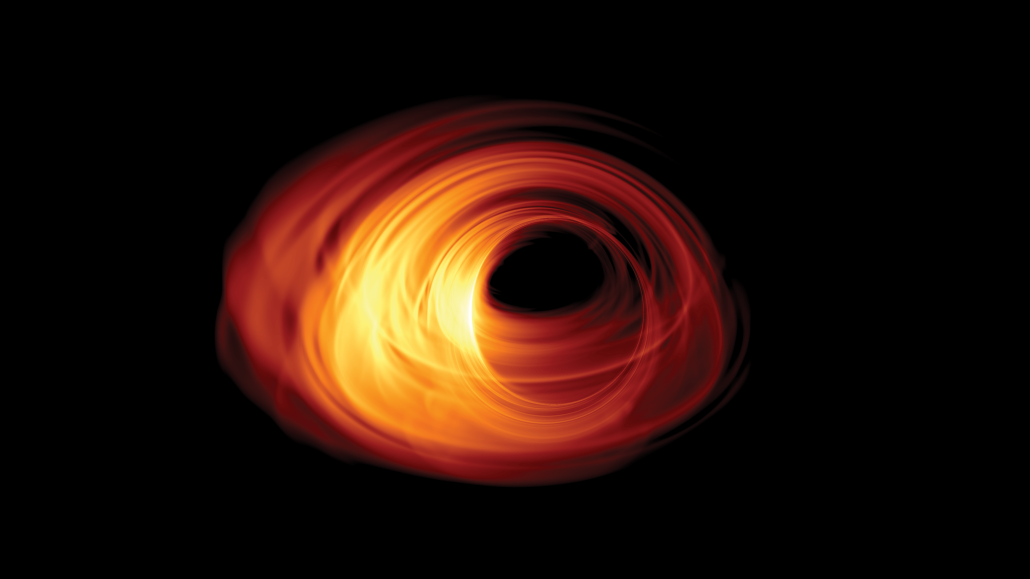Imaging the shadow of a black hole
The defining feature of a BH is the event horizon, the boundary from within which a particle cannot escape.
At the boundary of the event horizon, the gravitational pull becomes so large that nothing can escape, including light (that is why BHs are black!). For these reasons, the event horizon has been defined as “the shell of points of no return”. Interestingly, BHs are completely ”black” only within the event horizon, from but outside the event horizon, light can escape. Black holes tend to suck up surrounding matter in a process called ‘accretion’. This surrounding matter accreting onto the hole heats up through viscous dissipation and converts gravitational energy into radiation, radiating bright light at many frequencies, including radio waves that can be picked up by radio telescopes. This shining material accreting onto the black hole crosses the event horizon, resulting in a dark area over a bright background: this is the so-called black hole “shadow”. The shadow is essentially an image of the event horizon, lensed by the strong gravitational field around the BH (which bends the path of light rays, acting as a lens and distorting the image) and superimposed over the background light. The concept of the black hole shadow was known since 70′ but the idea to image it in the black hole in the center of our Milky Way was first presented in a paper by Falcke et al. (2000).
Let’s have a look at a simulated image of an accreting black hole:

Simulated image of an accreting black hole. The event horizon is in the middle of the image; we can see the shadow (it looks like the top half of a circle, somewhat darker than its surroundings). The rotating accretion disk can be seen surrounding the shadow.
Image credit: Bronzwaer, Moscibrodzka, Davelaar and Falcke, Radboud University 2017. 4K black hole accretion flow image (inclination 60 deg, disk model) made using a HARM2D GRMHD slice in RAPTOR.
The predicted size of the shadow cast by the event horizon of the supermassive black hole at the center of our own Milky Way is about 50 microarcseconds (that is one fifty millionth of an arcsecond, which is 1/3600th of a degree!). Although super small, this angular size can actually be resolved by astronomical observations using an interferometric technique at radio wavelengths, called Very Long Baseline Interferometry or VLBI (see here for details).
In general, the intrinsic size of the shadow is mainly determined by the BH mass: the bigger the mass the larger the shadow. The intrinsic shape instead depends on both the BH spacetime, which is mainly determined by the theory of gravity assumed to govern the BH, as well as on the astrophysical model of the plasma flow (and can change if the emission is coming from an accreting disk as opposed to an expanding jet). The BHcam project aims to use the detailed shape of the shadow to infer the astrophysical nature of Sgr A* (see here for details) as well as to test Einstein’s General theory of Relativity against alternative theories of gravity (see here for details) through state-of-art multi-dimensional general relativistic magneto-hydrodynamic simulations (see here for details).



